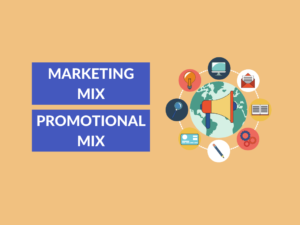What is Cost?
Cost refers to the amount of resources, such as money, time, and effort, required to produce or obtain something. It represents the total expenses incurred in the production or acquisition of a good or service. Cost can be categorized as direct cost, indirect cost, fixed cost, and variable cost.
Examples of Cost
1. Manufacturing Cost: The cost incurred in producing goods, including materials, labor, and overhead expenses.
2. Opportunity Cost: The cost of choosing one option over another, in terms of the benefits foregone.
3. Marketing Cost: The expenses associated with promoting and advertising a product or service.
Uses of Cost
1. Determining Profitability: By comparing the cost of goods sold with the selling price, businesses can determine their profitability.
2. Setting Prices: Cost analysis helps businesses set competitive prices by ensuring that costs are covered while maintaining a reasonable profit margin.
3. Budgeting: Understanding costs is essential for creating budgets and forecasting financial performance.
What is Price?
Price refers to the amount of money that is charged or paid for a product or service. It reflects the value assigned to a good or service by the seller. The price can be influenced by factors such as demand, competition, production costs, and perceived value.
Examples of Price
1. Retail Price: The price at which a product is sold to the end consumer in a retail store.
2. Wholesale Price: The price at which products are sold to retailers or other businesses for resale.
3. Subscription Price: The cost of a recurring service or membership.
Uses of Price
1. Revenue Generation: Price is a critical factor in generating revenue for businesses.
2. Market Positioning: Price can be used to position a product or service within a specific market segment.
3. Demand Management: Price can be adjusted to manage demand, such as offering discounts during off-peak periods.
Differences Table
| Difference Area | Cost | Price |
|---|---|---|
| Definition | Amount of resources required to produce or obtain something | Amount of money charged or paid for a product or service |
| Focus | Production or acquisition expenses | Value assigned by the seller |
| Types | Direct cost, indirect cost, fixed cost, variable cost | Retail price, wholesale price, subscription price |
| Usage | Determining profitability, setting prices, budgeting | Revenue generation, market positioning, demand management |
| Impact on Business | Cost control is crucial for maximizing profit | Pricing strategy affects market share and competitiveness |
| Perception | Internal perspective within the organization | External perspective from the customer |
| Flexibility | Can be managed and controlled by the organization | Subject to market forces and customer preferences |
| Timing | Determined before the sale of a product or service | Determined during or after the sale of a product or service |
| Relation to Value | Cost is the investment to create value | Price reflects the perceived value by the customer |
| Long-term Impact | Cost management strategies can impact sustainability | Pricing decisions can affect market perception and customer loyalty |
Conclusion:
In conclusion, cost and price are two distinct concepts in the business world. Cost represents the resources expended to produce or obtain something, while price reflects the value assigned by the seller. Understanding the differences between cost and price is crucial for businesses to make informed decisions about profitability, pricing strategies, and market positioning.
Knowledge Check:
- Which term refers to the amount of money charged or paid for a product or service?
- What are some types of cost?
- How can price be used in market positioning?
- What is the difference between cost and price in terms of timing?
- What is the impact of cost management strategies on business sustainability?
- Define cost in one sentence.
- What is the focus of price?
- How can understanding cost and price be beneficial for businesses?
- Which term represents the internal perspective within the organization?
- What does price reflect?
Answer: Price
Answer: Direct cost, indirect cost, fixed cost, variable cost
Answer: Price can be used to position a product or service within a specific market segment.
Answer: Cost is determined before the sale, while price is determined during or after the sale.
Answer: Cost management strategies can impact the long-term sustainability of a business.
Answer: Cost refers to the amount of resources required to produce or obtain something.
Answer: Price focuses on the value assigned by the seller.
Answer: Understanding cost and price helps businesses make informed decisions about profitability, pricing strategies, and market positioning.
Answer: Cost
Answer: Price reflects the perceived value by the customer.
Related Topics:
- Difference between cost and value
- Factors influencing pricing decisions
- Strategies for cost control
- Importance of market research in pricing
- Understanding customer perception of price


